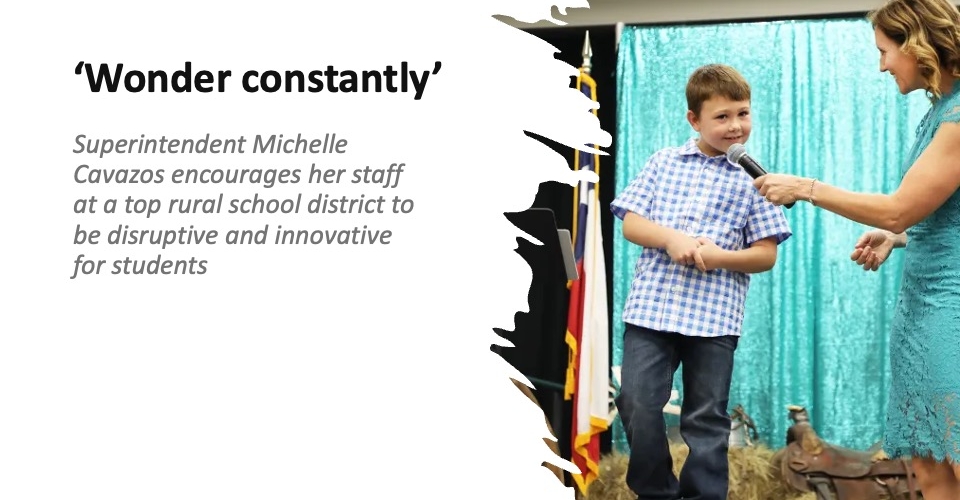In recent years, public education has become a highly polarized issue in the United States. This polarization has made it more important than ever for boards of education and superintendents to have strong and positive working relationships as these relationships are crucial to creating a cohesive vision for the future of our educational system.
In this article, we will delve into the importance of these relationships, the ways they can go wrong, and what stakeholders can do to build and maintain them. Remember, the only difference between the words “unit” and “unity” is the “y.” The unit is me thinking, and unity is we thinking. To that end, the “y” (why) matters. It is important for us to remember the “why” of strong board-superintendent relationships before even mentioning the “how.”
One of the most significant benefits of strong relationships between boards and superintendents is that they can lead to improved student achievement. Collaboration can foster the development of policies and strategies that prioritize student success. When boards and superintendents work together, they can set clear goals and expectations for student achievement and ensure that all students have the support and resources they need to succeed.
On the other hand, when boards and superintendents do not work well together, student achievement suffers. When these two groups are not aligned on goals and priorities, it can lead to confusion and inefficiency. For example, if a board prioritizes reducing class sizes while the superintendent focuses on teacher professional development, resources may be misdirected, and student achievement may stagnate. The savvy superintendent knows the value of constant dialogue with board members around common goals and plans.
Another critical benefit of strong relationships between boards and superintendents is they can lead to more efficient use of resources. With limited funding and resources available, it is essential that they work together to ensure resources are being used effectively and efficiently. When they collaborate on budget planning and resource allocation, they can ensure resources are being directed towards areas that will have the greatest impact on student achievement.
On the flip side, when boards and superintendents do not collaborate on budget planning and resource allocation, it can lead to wasteful spending and inefficient use of resources. Superintendents who keep their boards in the dark about budget decisions are not just harming the board-superintendent relationship, they are robbing themselves of tremendous thought partners.
More from DA: 3 big districts make big hires to fill superintendents’ posts
Another key benefit of positive relationships between boards and superintendents is they can help to foster trust and transparency within the broader educational community. When they work together openly and honestly, they can build trust with their stakeholders and demonstrate their commitment to improving the educational system. This can help to build a sense of community and shared responsibility for student success. For example, when a board and superintendent are transparent about their decision-making processes and communicate clearly with teachers and parents, it can create a sense of trust and ownership in the community.
Perhaps the biggest area of conflict arises when boards and superintendents do not prioritize transparency and trust-building, as it can lead to a lack of confidence in the educational system. For example, if a board and superintendent make decisions behind closed doors without consulting with teachers or parents, it can create a perception they are not responsive to the needs of the community. This can lead to disengagement, decreased morale, and a lack of support for the educational system.
Building positive relationships between boards and superintendents can provide a model for collaboration and compromise in the face of polarization on a grand scale. By finding common ground and working towards shared goals, they can set an example for other stakeholders in the educational system. This can help to create a more cohesive and effective educational system that prioritizes the needs of all students.
However, when boards and superintendents are unable to find common ground or prioritize collaboration, it can exacerbate the already-existing polarization in public education. When these two groups are not aligned, it can create a perception that the educational system is not working towards a common goal. This can lead to increased political and ideological divisions that make it even harder to achieve consensus on important issues.
To build and maintain positive relationships, boards and superintendents should prioritize communication and collaboration. Communication is key to ensuring that both groups understand each other’s priorities and goals. Collaboration enables boards and superintendents to work together towards common goals and develop policies and strategies prioritizing student success. To this day, I regularly ask other superintendents about ways they communicate with their boards and in what ways they build collaborative experiences. I regularly hear new ideas, share some of my own, and firmly believe we all get better as a result.
Finally, the board superintendent team should prioritize building a culture of respect and trust within the educational community by valuing different perspectives and acknowledging the expertise of others. When boards and superintendents demonstrate a willingness to listen to different viewpoints and work together towards common goals, it can create a sense of unity and shared responsibility for student success. It is always a good reminder that we are coming together to “do right” and not “be right.”
In building a case for good board-superintendent relations, we must remember strong relationships between boards and superintendents are crucial to improving student achievement, ensuring efficient use of resources, fostering trust and transparency, and creating a model for collaboration and compromise. When these relationships are not prioritized, it can lead to confusion, inefficiency, lack of trust, and exacerbation of existing polarization. By prioritizing communication, collaboration, and respect, we can work together to build positive relationships that benefit all students and improve the educational system. Remember, the people beside you are more important than the task in front of you; with this understanding, we can accomplish great things together.



